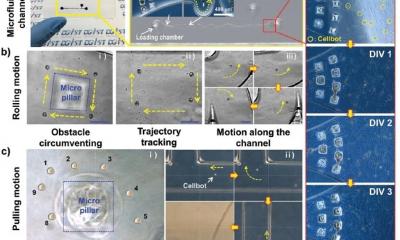"Pulse" technology may replenish skin's collagen
A team of Tel Aviv University and Harvard Medical School researchers has devised a non-invasive technique that harnesses pulsed electric fields to generate new skin tissue growth. According to their research, the novel non-invasive tissue stimulation technique, utilizing microsecond-pulsed, high-voltage, non-thermal electric fields, produces scarless skin rejuvenation and may revolutionize the treatment of degenerative skin diseases.

The study, published recently in Scientific Reports, was led by Dr. Alexander Golberg of TAU's Porter School of Environmental Studies and the Center for Engineering in Medicine at Massachusetts General Hospital, Harvard Medical School, and Shriners Burns Hospital in Boston, in collaboration with Dr. William J. Austen, Jr. from the Department of Plastic Surgery at Massachusetts General Hospital and Dr. Martin L. Yarmush at the Center for Engineering in Medicine at Massachusetts General Hospital, Harvard Medical School, and Shriners Burns Hospital in Boston, along with other prominent researchers.
An (effective) shock to the system
"Pulsed electrical field technology has many advantages, which have already proved effective — for example, in food preservation, tumor removal, and wound disinfection," said Dr. Golberg. "Our new application may jumpstart the secretion of new collagen and capillaries in problematic skin areas. Considering that, in the modern era of aging populations and climate change, degenerative skin diseases affect one in three adults over the age of 60, this has the potential to be an healthcare gamechanger."
Current therapies to rejuvenate skin use various physical and chemical methods to affect cells and the extracellular matrix, but they induce unsightly scarring. Pulsed electric fields, however, affect only the cell membrane itself, preserving the extracellular matrix architecture and releasing multiple growth factors to spark new cell and tissue growth. By inducing nanoscale defects on the cell membranes, electric fields cause the death of a small number of cells in affected areas. The released growth factors increase the metabolism of the remaining cells, generating new tissue.
"We have identified in rats the specific pulsed electric field parameters that lead to prominent proliferation of the epidermis, formation of microvasculature, and secretion of new collagen at treated areas without scarring," said Dr. Golberg. "Our results suggest that pulsed electric fields can improve skin function and potentially serve as a novel non-invasive skin therapy for multiple degenerative skin diseases."
The researchers are currently developing a low-cost device for use in clinical trials in order to test the safety and efficacy of the technology in humans.
Source: Tel Aviv University
02.07.2015






